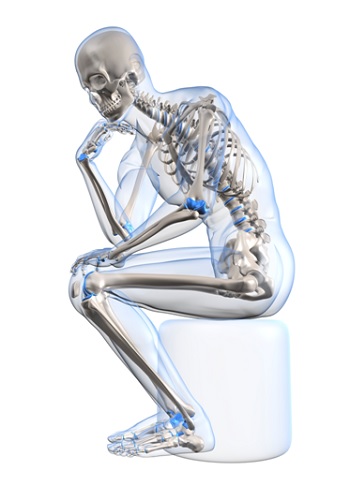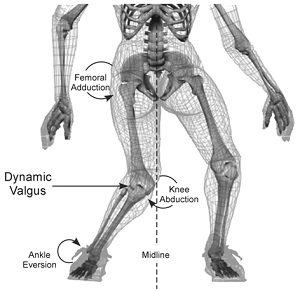Simon Wellsted Injury Prevention Series - What is Compensation and Why Does it Happen?
Specialist Biomechanics & BodyMOT Coach Simon Wellsted joins us again to continue his Injury Prevention Series; a look at how we can prevent many of the injuries we sustain in everyday life...

"In my previous article I introduced the concept of compensation and why it is so important when it comes to pain or injury - and posed the question "Is where pain or injury ultimately occurs, actually the root cause of the problem?" In my experience, the answer is very often 'NO' - and in this article I hope to explore some of the reasons for this.
Simon Wellsted
Consider a runner who experiences knee, shin or foot pain. I would say that in the vast majority of cases I see, the pain is indeed at the knee, shin or foot, but the cause is somewhere else entirely. Exactly the same can be said of back pain.
Taking an analogy from my previous post, a 'hammer' is hitting at the point of pain, but the reason why the hammer is hitting there is because there is compensation going on elsewhere in your body. So, from where might this compensation be stemming?
From an Intrinsic Biomechanical perspective we find that a large number of such compensations (over 60%) actually stem from the pelvis.
It has been shown that if there is an issue with the function of your pelvis, this can cause multidimensional compensations throughout your body, both upwards (through your spine, to you shoulders, neck and arms) and downwards (through your glutes, legs and knees to your feet).
An issue with the function of your pelvis has been shown to actually raise the risk of back pain or knee injury. We find that a large proportion of back pain, shoulder pain or knee pain issues actually have their cause rooted in a dysfunctional pelvis. But what do we mean by dysfunctional?
Your pelvis is a highly complex piece of machinery in your body. Its functions include:
- Providing load bearing
- Transmitting this load to where it needs to go
- Providing the attachment point for a very large number of extremely significant (but also extremely problematic) muscles
- Providing the MEANS by which we can walk or run
When you walk (or run) your pelvis moves; when one leg is forward, the pelvis is tilted backwards on that side, and for the other leg, which is backwards, the pelvis is tilted forwards on that side. So at any given point in the walking cycle, the pelvis is tilted forwards on one side and backwards on the other.
What we find in clinic when we test or screen this pelvis function is that it very often gets stuck forwards or backwards. 
A good example is the spine. To cope with a stuck, rotated or tilted pelvis, the spine must maintain its upright posture, so it curves sideways. This then has an immediate knock-on effect on all the muscles and joints of your spine (nerves are affected as well and we will explore this in a future article). As we have seen, when structures are asked to perform functions in ways that they were not originally designed, this causes hammers to hit throughout the body - 'hitting the corner of the table, over and over again!'
You are highly unlikely to know this invisible over-use compensation is happening to your body. A dysfunctional pelvis causing a curving of the spine or an inward rotation of your leg resulting in over-pronation at the foot does not result in immediate pain; and therefore we don't typically seek help. We call this situation sub-clinical because it does not result in something that causes you to go to see your GP or Osteopath.
Ultimately however, your regular activities over an extended period of time may eventually reach a threshold that results in pain or injury - somewhere in the body. We regularly track arm, neck, shoulder, spine (thoracic and lumbar), hip, leg, knee, shin and foot pain to a dysfunctional pelvis.
How many runners wear special shoes or insoles because they have been told they over-pronate when running? Might there be a reason why they are over-pronating? Think what compensations a dysfunctional pelvis might be causing at the foot.
In my next article I will explore what you can do about sub-clinical over-use compensation to significantly reduce the risk of nagging pain or serious injury.
Simon Wellsted MISRM, MSTO MBCA
Specialist Biomechanics Coach™ & BodyMOT Coach™
Injury Prevention and Back Pain Specialist
Mobile: 07836 348164
Email: simon@unitybodymot.org
Web: www.unitybodymot.org
Facebook: Facebook.com/InjuryPrevention
Twitter: @unitysportthera